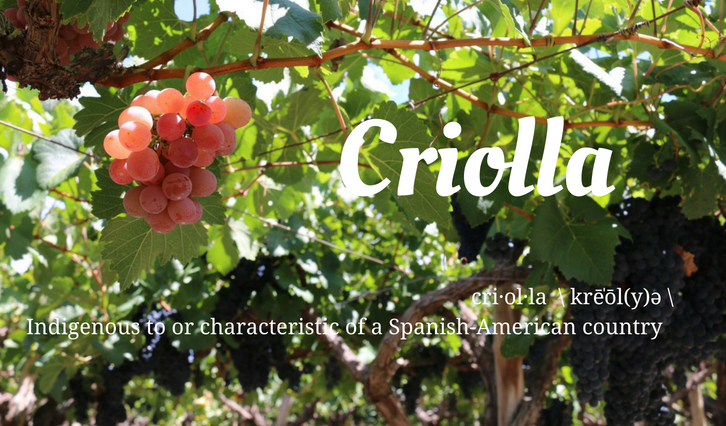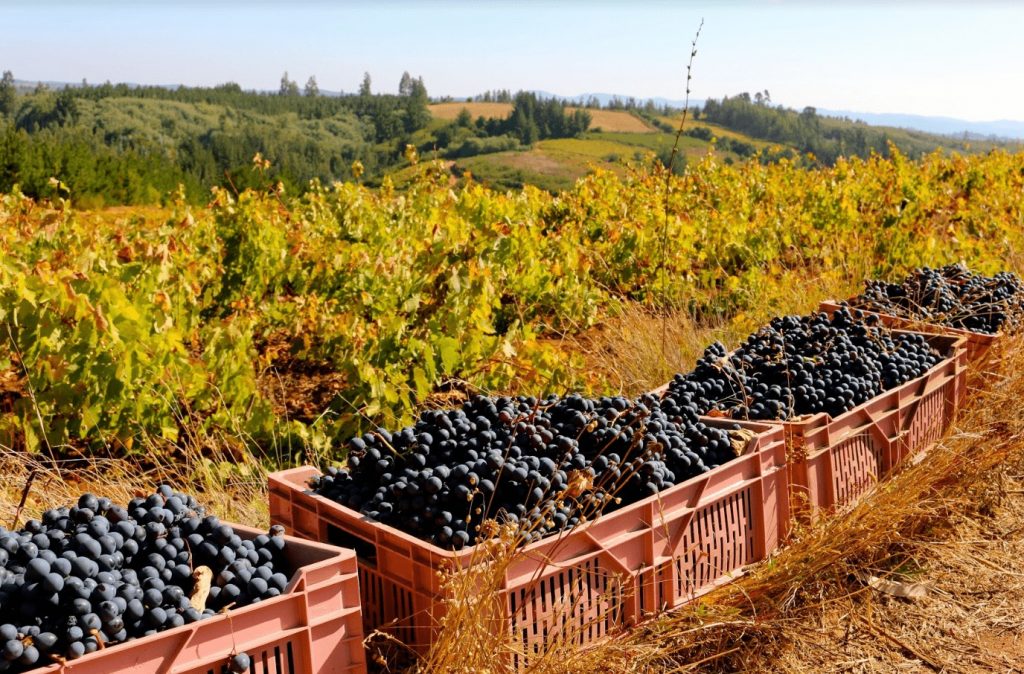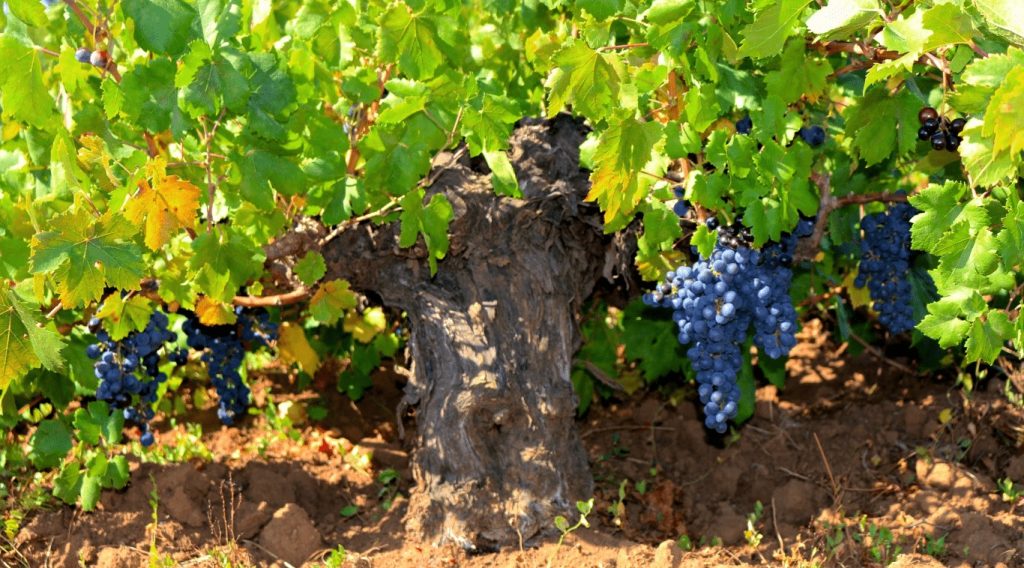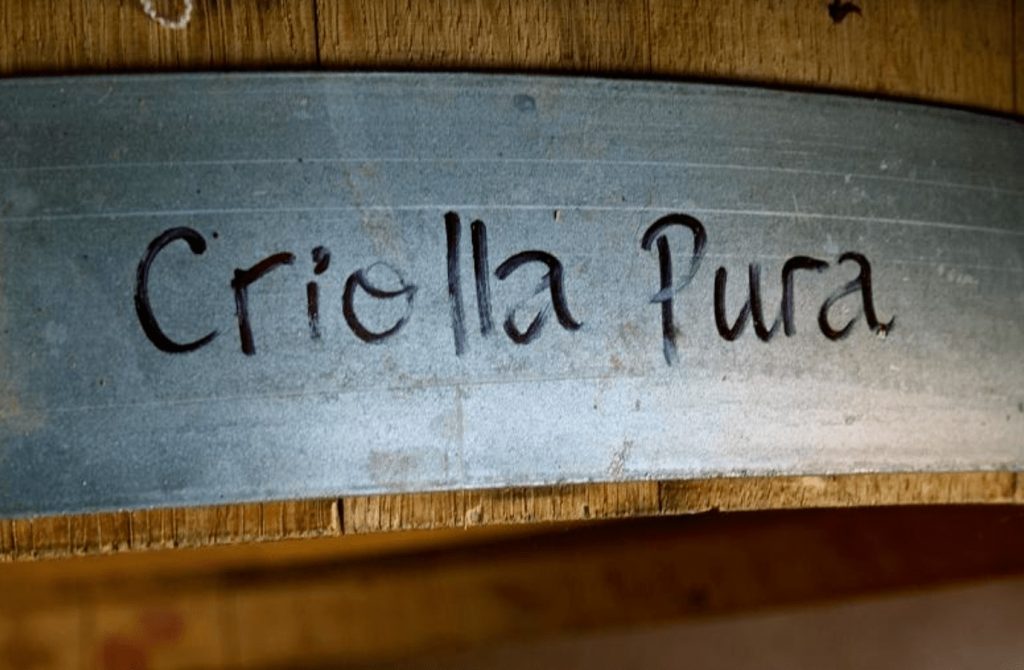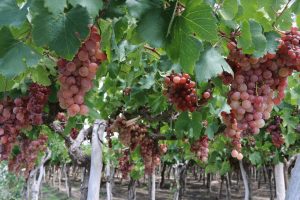What is Criolla
The Criolla Family Tree
Revaluing Criolla
Criolla Wine Production in Numbers
Recommended Criolla Wine Producers
If I had to pick just one wine to represent South America, it would be Criolla. Criolla is the foundation on which South American wine was built. It was the Criolla grape varieties that proudly spread throughout the Americas in the 16th and 17th centuries and give birth to wine industries and empires stretching from Chile to Mexico.
In the last century, however, Criolla grape varieties have largely been shunned by wine producers and consumers. Although tens of thousands of hectares of Criolla vines are still in existence today, Criolla wines are under the radar of most wine drinkers. But, as some winemakers are beginning to take notice of the potential of Criolla, could Criolla have a new lease of life as the quintessential South American wine?
The history of Criolla grape varieties & building fabric of South American wine
First of all, what is Criolla? ‘Criolla’ as a word or concept refers to a person or thing of Spanish-descent, born or developed in the Americas. Music can be Criolla, food can be Criolla, a person can be Criolla and – in this case – grape varieties are Criolla.
When talking about grapes, Criolla, in fact, refers to a family of grape varieties (although, confusingly, any member of that family can be called Criolla as a singular). There were a handful of first varieties – or founding Vitis vinifera varieties – brought by the Spanish in the mid-1500s when they colonised and started viticulture on the continent. The two most important ones were Moscatel de Alejandria and Listán Prieto.
During the first hundred years of New World viticulture, these varieties (which were brought from Spain either as sticks or seeds) were the first to be planted, yield grapes and be vinified. Moscatel de Alejandria was joined by Mollar and Palomino as the main white grapes brought from Europe. But it was actually Listán Prieto that proliferated the continent. This variety spread up to the US (where it is called the Mission grape) and down through South America with notable levels of production in Peru (where it is commonly called Negra Criolla), Chile (where it is called País), Bolivia (where it is called Missionera) and in Argentina (where it is called Criolla Chica). The 45+ synonyms give you an idea of its widespread and yet localised nature. In 1833, Listán Prieto is thought to have accounted for over 90% of Chile and Argentina’s vine plantings.
Criolla wines & giving birth to native grape varieties
From these founding varieties, the first crossings happened – giving birth to the first native grape varieties in South America. Technically these crossings that happened in South America are the Criolla grapes. However the founding varieties of Listán Prieto, Moscatel de Alejandría, Palomino and Mollar are widely considered and called Criolla varieties too.
One of the most notable of these native Criolla varieties is Torrontés in Argentina (which is, in fact, three different varieties – Torrontés Riojano, Torrontés Sanjuanino, Torrontés Mendocino). However, Torrontés is by no means the only native Criolla variety. There’s an intricate web of Criolla varieties in South America today (mainly in Chile, Argentina, Peru and Bolivia) and over 100 varieties have been identified so far. This is likely just the tip of the iceberg.
THE CRIOLLA FAMILY TREE
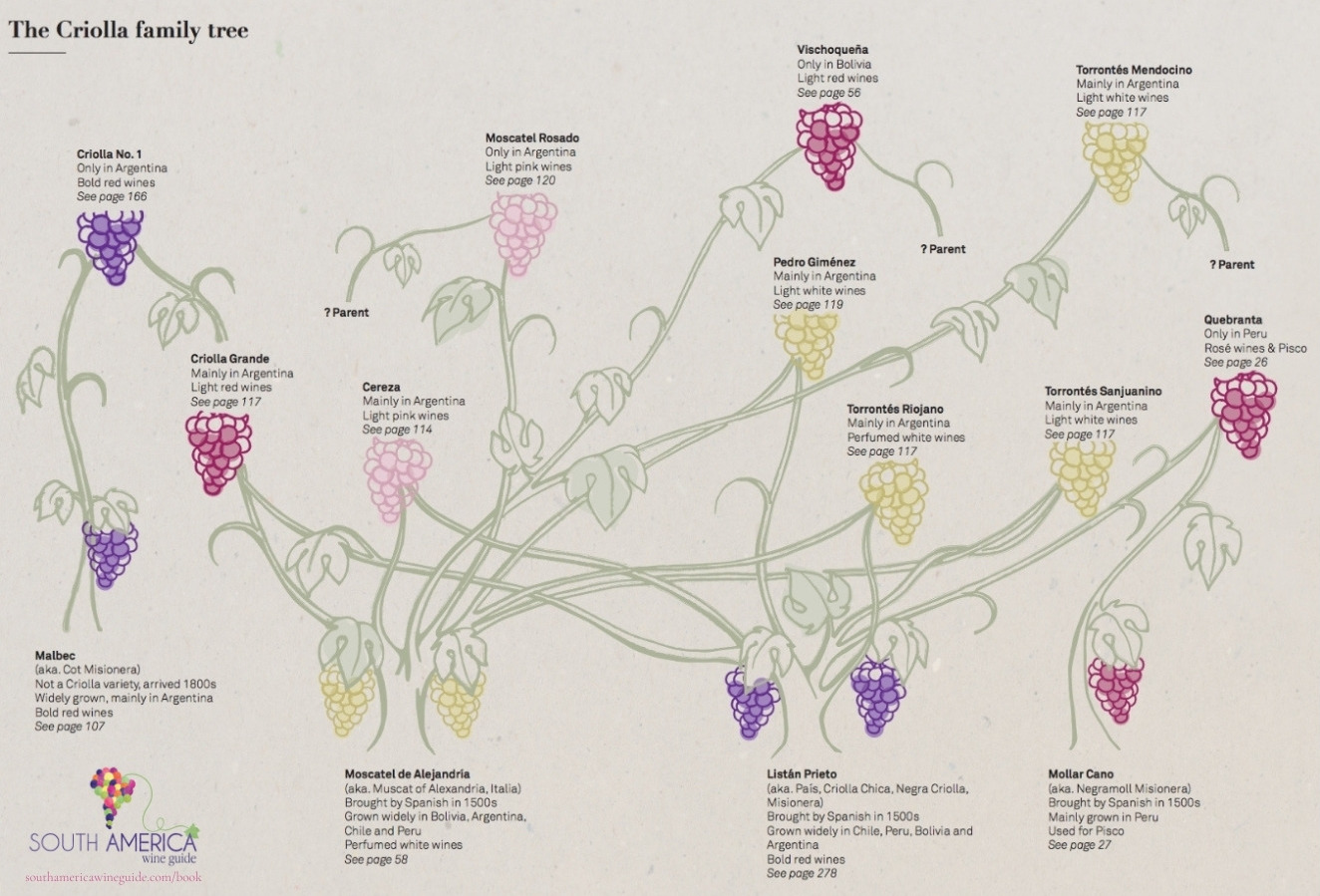
In its heyday of massive production, Criolla grape varieties dominated South America’s wine scene:
- País in Chile (the original Misionera grape, Listán Prieto) accounted for over 30,000 hectares in 1985
- Cereza in Argentina (a native grape born of a cross between Moscatel de Alejandría and Listán Prieto) hit its stride in the 1980s with 40,000 hectares while Torrontés (another Moscatel de Alejandría and Listán Prieto cross) still claimed 20,000 hectares by the early 1990s
- Moscatel de Alejandría has never abdicated its throne as the most-planted variety in Bolivia.
Want to read all about South American wine?
Get your copy of the
SOUTH AMERICA WINE GUIDE E-BOOK
& the full, award-winning hardback
THE SOUTH AMERICA WINE GUIDE
Read more about Criolla in The South America Wine Guide book
Revaluing Criolla grape varieties
Although the first wave of influence in South America’s budding wine industry was Spanish, different waves of immigrants impacted the wine scene as time went by. Whether it be Spanish, Italian, French, German, Portuguese or Swiss, the colonisers brought their vines (along with their olive trees and wheat) and knowledge with them to recreate their products from home and changed the genetic diversity of South America’s grape vines each time.
EUROPEAN GRAPES
The Spanish and Italian influence was particularly strong in the 19th century, but the French influence has arguably dominated since. It is French (and mainly Bordeaux) grapes that have forged the modern South American wine identity as we know it: Cabernet Sauvignon, Sauvignon Blanc, Merlot and Carmenère in Chile; Malbec in Argentina; Tannat in Uruguay; and Cabernet Sauvignon, Merlot and Chardonnay in Brazil.
Some of these varieties – Malbec, Carmenère and Tannat – were arguably rescued from extinction by finding a home in South America. And the others – Cabernet Sauvignon, Sauvignon Blanc, Merlot and Chardonnay – are internationally popular varieties which have been used to show the great capability of South American winemakers to express the terroir characteristics of their respective wine regions. But these wines will always be just another Merlot, or another Cab, or another Sauvignon Blanc. Where South American wine producers do have a different card up their sleeve, and I think you’ve probably already guessed where I’m going with this, is with the Criolla varieties.
CRIOLLA GRAPES
Criolla wines have a long and rich history on the continent and are utterly unique. This is the quality that winemakers are beginning to recognise today in working with Criolla varieties. While plantations have declined significantly over the last century, they haven’t disappeared (see the stats below). Producers are paying more attention to these old vines for making quality wines, rather than relegating them to anonymous bulk and jug wines, as they had been for the past century.
The Criolla vines are the oldest vines on the continent and while most of them are over 40 years old, there are some vineyards that are documented to be well over 200 years old. This is a rare and precious resource that few wine countries can boast, and winemakers are taking notice.
Making a case for Criolla wines: Modern knowledge, old vine wisdom
Criolla varieties, in general, are quite high-yielding. This quality is the very reason the Spanish favoured them when selecting varieties to establish wine regions in a new land and produce large quantities as quickly as possible. The age of the vines has naturally lowered yields, concentrated the grapes and brought more refinement to the wines. Combine that with modern winemaking techniques and knowledge, and you have an entirely new face for Criolla wines.
CHILE
Where the Criolla revolution is really taking off is Chile. Old País vines in Maule, Itata and Bío Bío are being used by dozens of producers for high-quality red wines and sparkling wine (rosé or blanc de noir). Finding a País wine is now a common fixture on most decent wine lists in Santiago and many of them have reached the export market too.
Producers including Louis Antoine Luyt, Bouchon Family Wines, Roberto Henríquez, Miguel Torres, Garage Wine Co and Rogue Vine have been exporting País wines for the last couple of years with great repercussions.
ARGENTINA
Across the Andes in Argentina, there’s also a Criolla revival in its infancy. According to INTA, over a third of the country is planted with Criolla varieties. INTA’s experimental vineyard in Mendoza has over 60 different Criolla varieties planted, which a dedicated team have been vinifying to understand their winemaking potential since 2011.
This wealth of Criolla varieties still in existence is starting to make its way to the glass with producers including Cara Sur, Durigutti,Ernesto Catena, Matias Michelini and Cadus leading the revival.
PERU, MEXICO AND BOLIVIA
The Criolla revival has similarly started to spread its wings in Peru, Mexico and Bolivia – especially in the natural wine scene. In Peru today, for example, you’ll find a handful of producers working with Criolla varieties. The old vines were more typically used for Pisco production, but today producers are hunting down the best examples of these old vine varieties to make fine table wines – often natural wines and usually orange wine with long skin contact. Wines made from Albilla (Palomino), Torontel and Quebranta (an indigenous crossing) are particularly worth seeking out.
In Bolivia, it is dry Muscat made from old vines that is the most captivating of the Criolla varieties although you’ll find interesting examples of Vischoqueña, Torrontés and Negra Criolla. In Mexico, there are a handful of wines being made from the Mission grape and other Criolla varieties such as Moscatel Negro.
Making modern wines from these old Criolla vines offers a new direction and inevitably a learning curve for producers. What is interesting about the learning curve is that many winemakers have returned to the old, artisan techniques used by their ancestors to make Criolla wines.
It is within the Criolla category where you’ll find wines being made using the traditional zaranda (bamboo screens) to hand press the wines; or fermented in historic clay amphora known as tinajas; or aged in large rauli casks. By making varieties that aren’t made anywhere else in the world, South American winemakers have reflected on their own heritage and patrimonial techniques – rather than looking to Bordeaux or California as is so often the case. It’s this grassroots revolution and pride in a local identity which makes the Criolla revival, in my opinion, so exciting.
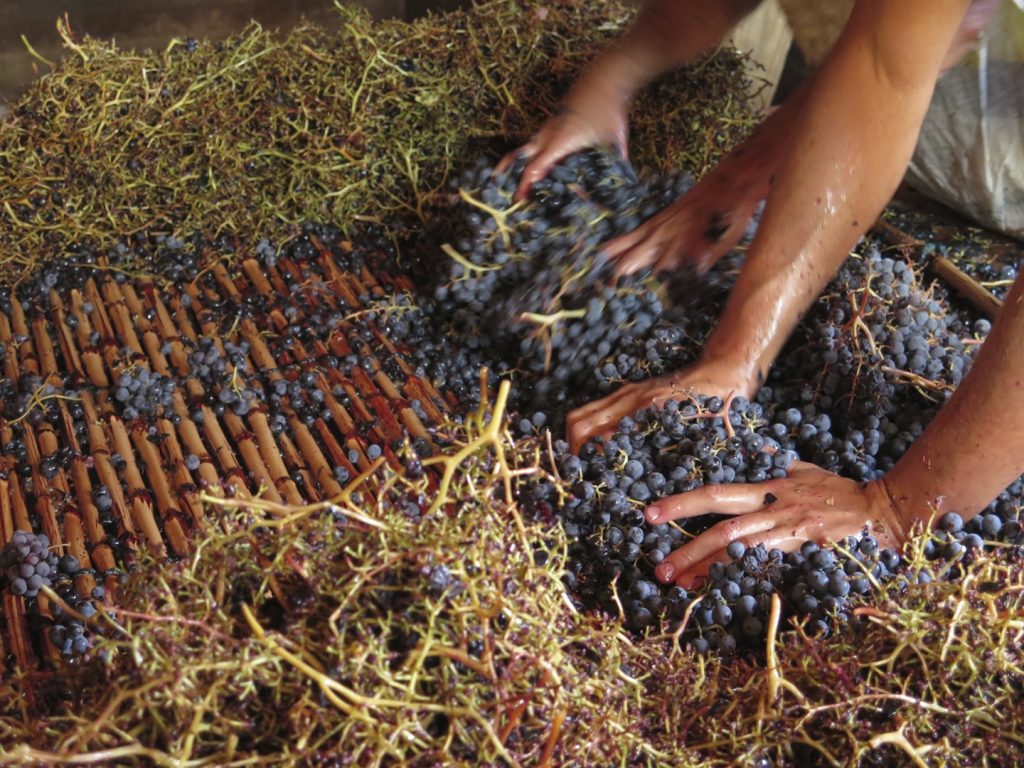
The road ahead…
Exciting as it may be, Criolla isn’t yet out of the woods. Old vineyards are still being abandoned, plantations are still declining and the knowledge from multigenerational growers of Criolla vines is being lost. Maintaining these old vines of Criolla varieties has become a social issue, and there are still relatively few willing to take up the mantle.
The stigma against Criolla production isn’t only on a local level, but a national one. I recently bought a clandestine bottle of País in Colchagua, Chile, in a brown paper bag. Why? Because Chile’s national viticulture institute doesn’t recognise the old vines or variety grown in that region. Without the right paperwork, and this is a major issue for small growers, the fruit has to be sold under the table at a low price. This undermines the value of these old vines and puts the livelihoods of small growers at risk.
There are still social, political and communication challenges to face with Criolla. I believe, however, that this is the modern day wine challenge in South America that could offer the most rewarding legacy of them all.
Criolla wine production in numbers
100+ Criolla varieties recognised today
CRIOLLA IN CHILE
- 9,600 hectares of País vines
- 4,270 hectares of Moscatel de Alejandria
- 640 hectares of Torontel
- 443 hectares of Pedro Jimenez
- 196 hectares of Corinto
- 159 hectares of Moscatel Rosada
- <1 hectare of
CRIOLLA IN ARGENTINA
27,970 hectares of Cereza
- 14,840 hectares of Criolla Grande
- 10,700 hectares of Pedro Giménez
- 8,170 hectares of Torrontés Riojano
- 6,180 hectares of Moscatel Rosado
- 2,630 hectares of Moscatel de Alejandria
- 1,820 hectares of Torrontés Sanjuanino
- 640 hectares of Torrontés Mendocino
- 360 hectares of Criolla Chica
- 110 hectares of Moscatel Amarillo
CRIOLLA IN PERU
- 1,250 hectares of Negro Criolla
- 1,011 hectares of Italia
- 361 hectares of Moscatel
- 330 hectares of Quebranta
- 7 hectares of Albilla
See statistics for South American wine production here!
Recommended Criolla wine producers
CRIOLLA WINES IN ARGENTINA
Passionate Wine, Via Revolucionaria
Pol Opuesto, Que Grande Sos
Ernesto Catena, Be My Hippy Love
Vallisto
Los Amaichas, Sumak Kawsay
Matias Morcos
Finca La Marchigiana (Catena Zapata)
Vinilo
Verdaderos Invisibles
La Liga de Enólogos
Cephas
CRIOLLA WINES IN CHILE
Aupa (David Marcel)
Zaranda
Bisogno Wines
Aterciopelado
CRIOLLA WINES IN PERU
Bodega Murga
Saint Lizier
Tinajas de Moquegua
Finca 314
CRIOLLA WINES IN BOLIVIA
CRIOLLA WINES IN MEXICO
CRIOLLA WINES IN SPAIN
Learn more about Criolla in Eastern Mendoza in our video guide to the region and its Criolla wines
READ MORE ABOUT CRIOLLA GRAPE VARIETIES AND WINES:
Criolla wines and Pisco varieties in Peru
A guide to Torrontés in Argentina
